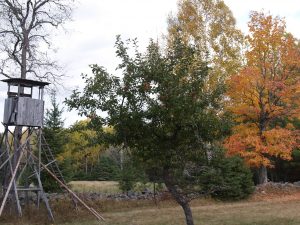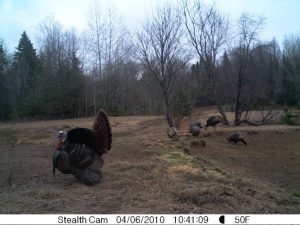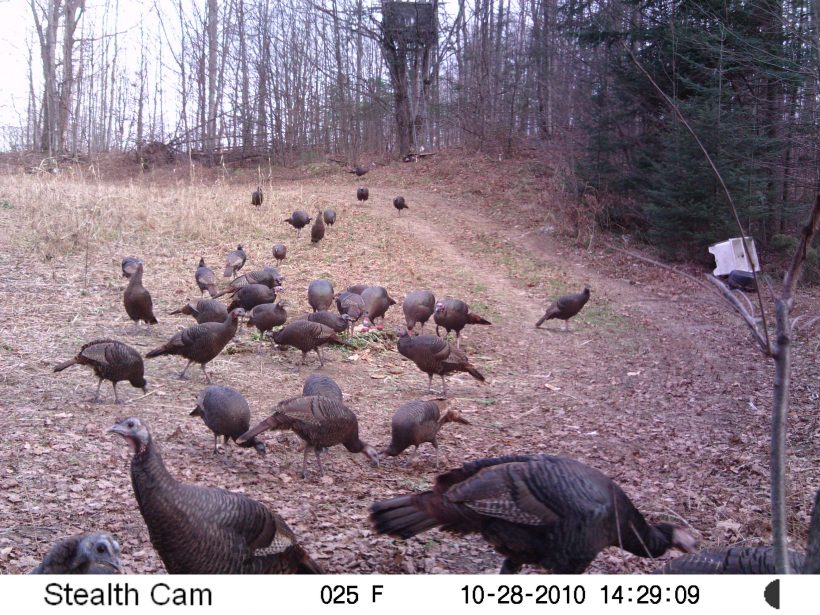Managing Wildlife
Hunting regulations in British North America date to 1762 when General Thomas Gage, military governor of Montreal, proclaimed a closed season on “partridges” (as ruffed grouse were commonly called) at that time, and to-day for that matter, from March 15 to July 15, “during which time they were not to be hunted, taken or killed.” In 1791 Lower Canada (Quebec) and Upper Canada (mostly Ontario) came into being. In 1793 the first wolf and bear bounty was established in an “Act to encourage the destroying of Wolves and Bears in different parts of this Province”. Wolf heads were worth twenty shillings and bear heads ten shillings. Indians were exempt from receiving the bounty. In 1830 they became eligible to receive the bounty for wolf pelts.
In 1839 the first general game law for Upper Canada was passed to establish protected seasons for all classes of game. Deer or fawns were not to be hunted between February 1 and August 1, and “Wild Turkey, Prairie Hen or Grouse; or any Grouse, commonly called Pheasant or Partridge; or any Quail or Woodcock” were not to be taken between March 1 and the first day of September. This law also contained the first ban on Sunday hunting and shooting.
In 1841 Upper and Lower Canada joined to form the Province of Canada. In 1843 moose and elk were given the same protected season as deer in “An Act to prohibit the hunting and killing of Deer and other Game within this Province, at certain times of the year.” Venison and other game were not to be sold during the closed seasons. For the first time legislation acknowledged unsportsmanlike conduct as the cause of the near extinction of species. By 1850 elk (wapiti) were nearing extinction in Ontario as we know it to-day. In 1856 an “Act to alter and amend the Game Laws of Upper Canada,” was put in place.
In 1867 Confederation established Ontario as a province. Under the British North America Act, “all matters of a local or private nature”, including wildlife, became a provincial responsibility. The federal government gained jurisdiction over fisheries. In 1868 the first game legislation for Ontario was established via a re-enactment of the game laws of 1856. In 1884 the last recorded puma (cougar or panther) was killed in Ontario by T.W. White of Creemore. In 1885 the Ontario Fisheries Act was born. The five-member Board of Fish and Game Commissioners for Ontario granted power to hire four Game Wardens for southern Ontario at $10 per month in 1892. A total of 392 deputy game wardens were also appointed. They were not paid a salary but received half of any fines they secured. Indians and settlers in unorganized districts remained exempt from the game laws.
Fundamentally, game managers used hunters to help manage wildlife populations. However, in the mid-1970s with the provincial deer herd numbers in decline many hunt camps became proactive and passed their own “Buck Laws” in an attempt to help the herd to rebound. From this evolved the Antlerless deer tag (or doe tag as it is often called). To this day, hunters apply for a doe tag. Having no doe tag limits one to hunting bucks. A combination of severe winters combined with high wolf/coyote numbers sees the provincial deer herd once again on the decline. The MNR Wildlife Management Units (WMUs) are responding by issuing fewer doe tags and hunt camps are putting their own management theories into practice; in essence, “putting their money where their mouth is.”
The introduction of special hunting seasons for shotgun, muzzleloader and archery introduced another hunter/wildlife manager to the scene. The food plotter. And their numbers increase annually.
Tom Spatafore likes to call such land management for wildlife farming on the wild side. His food plots contain crops suitable to wildlife with minimal human interference. “Wildlife have a simple rule when it comes to food,” says Spatafore. “They will always eat the best and leave the rest.” And so, over a span of at least 15 years, by process of elimination, Spatafore has been able to determine what wildlife on his land prefer and require for optimum health. There are a variety of 24 plants in his customized food plot feed, “all rich in minerals and proteins,” he says.
“People say we only do this so we can kill deer,” said Spatafore’s wife Carol. “But we do this 365 days a year and we can only take one deer.” Carol doesn’t hunt but loves to see the variety of wildlife and is as enthused as her husband about food plots and wildlife. And she emphasizes, “food plots require serious commitment.”
“It’s not a one time effort,” echoes Spatafore. “Each year you have to prepare the land and seed the crops.”
Joe the Elkman grew up in Austria helping to manage elk herds on private land. The Game Overseer would sit in an elevated tower and study his herd to determine which ones to harvest always with an eye to improving the quality of elk. The more a hunter paid the landowner the bigger the prize. “You are told which animal to shoot,” said Joe. “You can’t keep the meat. That is sold.” But you can keep the horns; at a price. “You pay by the ounce,” he said. Not quite the same as here in Ontario.

Spatafore uses a Stealth trail camera to study the animals that visit his plots. “They have become nocturnal,” he said. But a good quality camera still captures excellent images. And Spatafore uses this tool to determine which animals can be harvested in order to maintain a healthy, vibrant population. “The young or old are eligible for harvest,” he said. “I like to leave those in their prime for breeding purposes.” It’s also a great way to collect antlers, or sheds as some call them. The photos indicate when they are dropping. In 2011 some bucks still had their horns by late February.
Since he began developing his food plots for deer other species have arrived. Wild turkeys, bear, the odd moose wanders through, red squirrels and lately raptors. Another reason why photographers, naturalists and others have come to Spatafore for his food plot program. When it comes to game management we have come a long way from 1762. To contact Spatafore for more information phone 1.613.337.5058 or e-mail him at tomsplace@sympatico.ca.

Photos- Joe’s tower (my photo), Tom’s turkeys (photos by Tom Spatafore).
